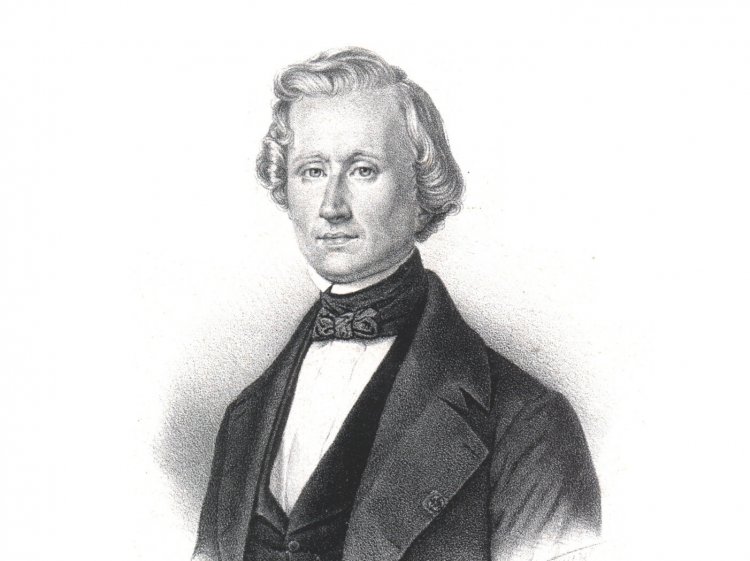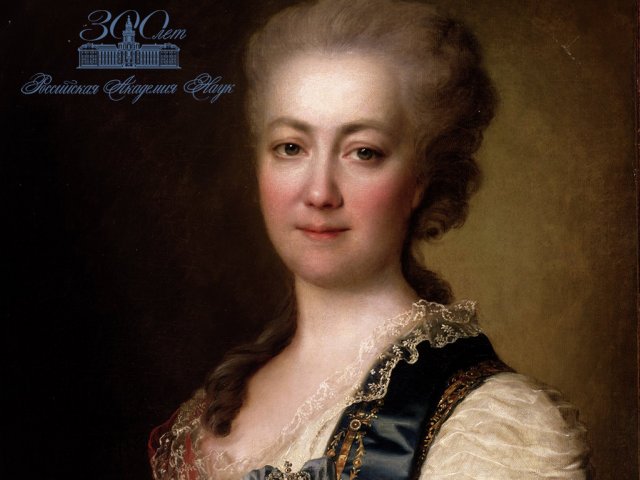Official:
Urbain Jean Joseph Le Verrier. March 11, 1811– September 23, 1877. French mathematician and astronomer. Discovered Neptune “at the tip of his pen.”
Life and Work:
1. As we are perfectly aware, Mendeleev theoretically predicted the existence of many previously unknown elements. In this regard, Engels compared him to a scientist who was born in 1811 in Saint-Lô. This scientist is Urbain Le Verrier.
2. Indeed, to most educated people, Le Verrier is known as the scientist who discovered Neptune “at the tip of his pen.” Observing the orbit of Uranus, astronomers have discovered that it does not behave in accordance with the laws of Kepler and Newton. Le Verrier pondered it fora while, performed a calculation, and assumed that the deviations in the orbit were caused by a hitherto unknown planet. Scientists searched and found the planet – Johann Halle did it in 1846.
3. The scion of a modest bourgeois family from Normandy showed early aptitude for the exact sciences. His parents had such faith in Le Verrier’s scientific career that they sold their house to let him get a good education.
4. Le Verrier graduated from École Polytechnique in Paris as an engineer, but he was not satisfied. Science beckoned, and Le Verrier proceeded to scientific research: at first, he studied chemistry at Gay-Lussac’s laboratory, then mathematics at Stanislaus College.
5. Le Verrier’s first scientific work, Writings on Phosphorus, was published in 1836. The scientist planned to continue studying chemistry, but chance intervened. The position of assistant at the École Polytechnique Chemistry Department was given To a competitor, and Le Verrier got the assistant’s position at the Department of Astronomy. Since then, Le Verrier became interested in celestial mechanics and astronomy, achieving outstanding results in studying the sky.
6. Le Verrier’s first work in astronomy, On the Secular Variations of the Orbits of the Planets, attracted the colleagues’ attention, and the famous astronomer Francois Arago invited Le Verrier to become an astronomer at the Paris Observatory. A decade and a half later, Urbain Le Verrier was elected director of the observatory for life.
7. Le Verrier owes his most famous discovery to Arago. It was he who inspired Urbain Le Verrier to solve the problem of the Uranus orbit deviations.
8. The discovery quickly made Le Verrier famous. The university immediately opened the Department of Celestial Mechanics for the famous scientist, and three years later – the Department of Astronomy. Leverrier was elected a member of the Paris Academy of Sciences, and a bust of him was installed in the academy hall.
9. There was a small scandal connected with the name of the newly discovered planet. At first, Le Verrier proposed to name the planet Neptune, but then suddenly changed his mind and, at Arago’s suggestion, proposed to name the planet in his honor. The scientific community outside of France did not approve of violating the traditions, and the name proposed by the British – Ocean – did not seem appropriate either. As a result, they settled on the name Neptune.
10. The name Neptune became widely known so quickly that the next year after the discovery, Afanasy Fet wrote the poem To La Verrier’s Neptune:
Greetings! Halfway
To eternity, greetings, Neptune! Above you,
Do you hear the noisy wings and the wind,
Stale with bluish feathers on the chest? Greetings!
There is not a moment of peace;
After you, I can see
Phoebe’s flying arrow,
Standing in the ether with its feathers tucked up with a screech.
You rushed by, flew by, flashed and disappeared,
But me!
11. Le Verrier is also credited with discovering anomalies in the displacement of the Mercury orbit perihelion. He showed that this displacement could not be caused by the influence of the known Solar system bodies. It led him to believe that there was a planet with orbit located inside the Mercury orbit. In 1915, this anomaly was finally explained within the framework of the general theory of relativity.
12. Le Verrier’s other research interests included asteroid formation processes and orbits of periodic comets and meteor showers.
13. Everyone knows that Le Verrier discovered Neptune, but it is much less known that he also laid the foundation for the weather forecaster profession. A storm of extraordinary force, which broke out in the Balaklava Bay during the Crimean War, caused great damage to English and French ships. And Le Verrier found out that it had been possible to predict the storm. This discovery led to creating the weather service and first synoptic maps.
14. A monument to Le Verrier was erected in the garden of the Paris Observatory. A crater on the Moon, a crater on Mars, and one of Neptune’s rings were named after him. And even if the big planet does not bear Le Verrier’s name, the asteroid 1997 was named after the scientist.






















